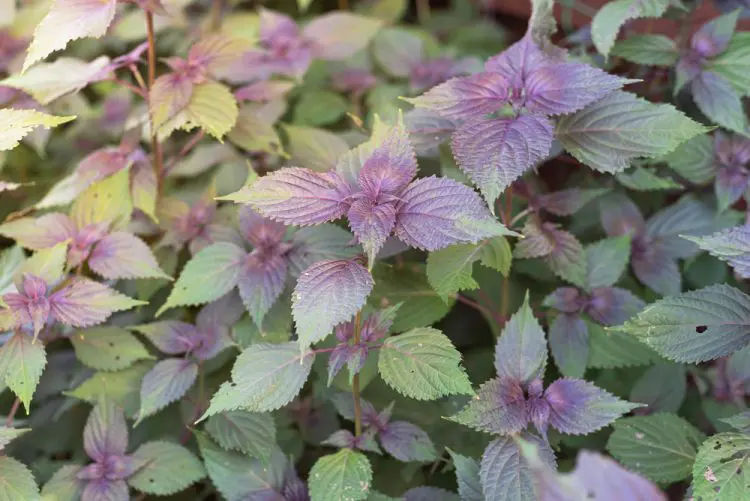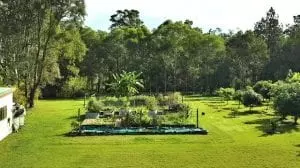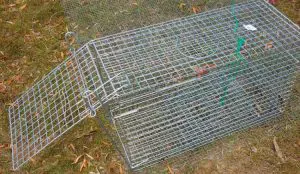Perilla is a herb from the mint family which is often called by its Japanese name, shiso. A staple in many Asian cuisines, perilla leaves have a unique flavour which is hard to put into words. They’re a bit minty, a bit aniseed, and a bit unlike anything else! The seeds are wonderful too: they have a nutty/peppery aroma, so are great for flavouring sauces or dehydrating.

What is Perilla?
Perilla comes in two main varieties. Perilla frutescens (shown above) is the more common, and may appear with either red or green/purple leaves. Perilla frutescens var. crispa has darker purple leaves with ruffled edges. There are some lesser-known strains as well. These include Korean green, Japanese green, purple/red and Britton, all or some of which you may come across in seed catalogues.
Perilla is a bushy herb to 60cm tall that is native to south-east Asia. It behaves as a perennial in warm climates (tropical, subtropical, and USDA zones 10-11) and as an annual in temperate & cool regions. Part of the mint family, it is easy to grow, attracts few pests and is low maintenance. Perilla contains antioxidants, vitamin A, iron, and calcium, & can be used in a variety of recipes, including desserts, drinks, and hot or cold savoury dishes.

How to Use Perilla
Diversity in the garden is one thing, but we also need to know how to use what we grow. Perilla is quite a versatile herb, as it can be consumed raw or cooked. Generally, you can use its leaves as you would those of basil or mint, so it works well as a garnish, as a topping, or in salads. It pairs with all meats, and is especially good with fatty fish like salmon. The seeds can also be eaten raw, dried, or used to flavour sauces.
Perilla features in a wide variety of Japanese and Korean dishes, such as rice wraps, umeboshi, pickled perilla leaves, tempura and sushi rolls. Otherwise, perilla makes an unusual addition to a stuffing, can be infused into oil, and dried to flavour salts and herb sprinkles. You can use perilla in cocktails as you would mint, add it to a sugar syrup for drinks, or use it as a feature ingredient in a perilla mojito.
To harvest perilla, simply cut off some leaves as required. Like most herbs, this can be done from about 2 months after transplant. Always clean & sterilise scissors or secateurs before use so as not to spread disease. Perilla leaves will keep in the fridge for about 4 days if wrapped in paper towels (kitchen roll).

Starting & Growing Perilla
Perilla can be started via seed or with a cutting, although seed is said to be the more successful method. Seeds of this herb need light to germinate, and are slow to start, so expect seedlings to appear in 7-21 days. Sow them in a standard nutrient-enriched fine potting mix, and keep the soil moist but not waterlogged (in my subtropical climate, I briefly spray my seeds and seedlings with a very fine mist up to 3 times a day, depending on the season). If growing in a frost-prone climate, start perilla seeds indoors, and plant out after danger of any frost has passed. The temperature needs to be at least 7C (45F) and sunny for perilla to get growing.
Once true leaves appear, perilla can be planted out to its final position. Perilla is somewhat drought tolerant once mature, but will establish into a strong plant if you keep the soil moist while it’s in its early stage of growth. Position your perilla plants according to your climate. While it does like full sun, it can tolerate a fair amount of shade in hot climates where it grows as a perennial.

Soil for perilla needs to be well-drained– just like most herbs, perilla won’t tolerate wet feet. While it will forgive you if you forget to water it for a day or two, an overly dry soil isn’t good either, as it will stunt growth. One inch of water per week is ideal, and avoid wetting the foliage as much as possible when watering. Average to rich soil is best for perilla, with an ideal pH range of 5.5-6.5. Naturally, a soil that contains adequate humus and organic matter will result in a large, lush & healthy plant.
Perilla has a moderate fertiliser requirement as it’s not a heavy feeder. If you adequately prepare the soil with compost or rotted manure before planting, then it should only require minimal top-ups every 3-6 months. In this way you’re starting to create a low-maintenance food garden.
Despite being a member of the mint family, perilla doesn’t spread via runners. It does, however, self-seed readily, so in ideal growing conditions, it can get out of hand if left unattended.

Ongoing Care
If perilla is given the right growing conditions, it can become large, bushy, and self-seed prolifically. While it is not a difficult plant to remove or cut back, container growing will give you more control.
Although perilla is usually low-maintenance, there are several pests which may appear. Aphids, cutworms, leaf rollers, flea beetles, spider mites, spider mites and white flies can all potentially feed on and damage perilla leaves. A diverse and harmonious garden will only rarely experience a pest outbreak: if so, remember that organic remedies like soap sprays, BT (dipel) and chilli sprays are usually sufficient treatment.













